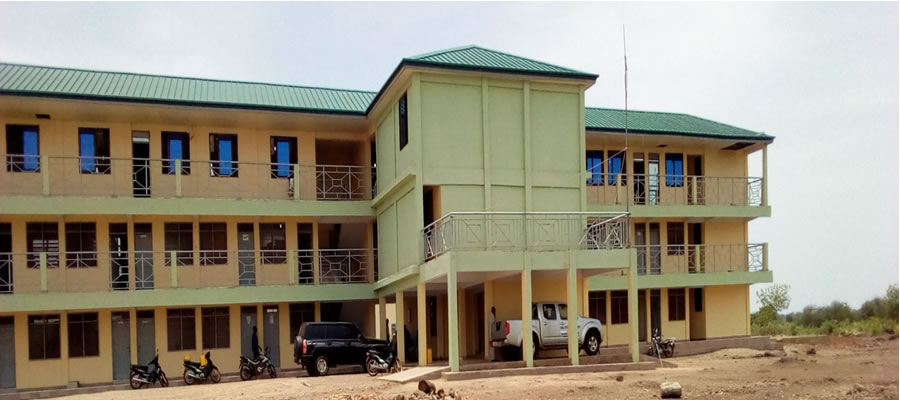

Industry
Industry refers to the type of product produced or service rendered at the respondent’s work place. Information was collected only on the main product produced or service rendered in the establishment during the reference period. Table 4.4 shows industry of employed persons, 15 years and older in the district. More than 70.0 percent of the employed population are engaged in the agriculture, forestry and fishery industry. Ten percent (10.0%) are employed in the manufacturing industry while 7.0 percent are employed in the wholesale and retail and motor repairs industry.
In the Lambussie-Karni District as a whole, 77.7 percent of male and 68.2 percent of female population are employed in the agriculture, forestry and fishing industry. The proportion of females (15.5%) employed in manufacturing is far higher than the proportion of males (3.5%). The proportion of females (8.4%) in the wholesale and retail industry is also higher than males (5.4%).
Employment Status
Employment status refers to the status of a person in the establishment where he/she currently works or previously worked. Eight employment status categories were provided: employee, self-employed without employees, self-employed with employees, casual worker, contributing family worker, apprentice, domestic employee (house help). Persons who could not be classified under any of the above categories were classified as “other”.
Figure 4.1 shows that for both sexes, a little over 50.0 percent are self-employed without employee(s) compared to contributing family workers which represent 37.6 percent. The rest of the various employment statuses (employee (5.8%), self-employed with employee(s) (2.1%), casual worker (1.5%), apprentice (0.9%), domestic employee (house help) (0.7%) and other (0.2%)) add up to only 11.2 percent.
Table 4.5 shows employed population 15 years and older by employment status and sex. From Table 4.5, out of the male population in the district, 54.5 percent are self-employed without employee(s) while 30.5 percent contributing family workers. The rest of the employment statuses (employee (9.3%), self-employed with employee(s) (2.2%), casual worker (1.9%), apprentice (0.6%), domestic employee (house help) (0.7%) and other (0.2%)) add up to only 14.9 percent.
For the female population in the district, 48.8 percent are self-employed without employee(s) while 43.5 percent contributing family workers. The rest of the employment statuses (employee (2.8%), self-employed with employee(s) (1.9%), casual worker (1.2%), apprentice (1.1%), domestic employee (house help) (0.6%) and other (0.1%)) add up to only 6.7 percent
Employment Sector
Table 4.6 shows employed population 15 years and older by employment sector by sex in the Lambussie-Karni District. The table shows that 94.7 percent of the employed population 15 years and older are found in the private informal sector, with only 3.3 percent been employed in the public (Government) sector.
For the male population in the district employed, 91.9 percent are in the private informal sector with only 5.2 percent and 2.3 percent in the public (government) and private informal respectively. The rest of the sectors (semi-public/parastatal NGOs (local and international) and other international organisations) summed up to a small percentage (0.6%).
The same trend is seen in the female population where 97.0 percent is employed in the private informal sector with only 1.7 percent and 0.8 percent in the public (government) and private informal respectively. Table 4.6 gives an indication of how big the private informal sector is in the district and hence its contribution to employment in the local economy.
Date Created : 4/10/2018 7:54:19 AM










 facebook
facebook
 twitter
twitter
 Youtube
Youtube
 +233 593 831 280
+233 593 831 280 0800 430 430
0800 430 430 GPS: GE-231-4383
GPS: GE-231-4383 info@ghanadistricts.com
info@ghanadistricts.com Box GP1044, Accra, Ghana
Box GP1044, Accra, Ghana